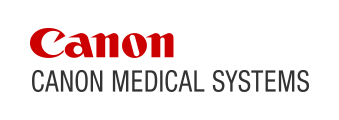News | Press Releases
September 7, 2012
FIRST WORLDWIDE MULTI-CENTER TRIAL CONFIRMS EFFICACY OF COMBINED CT ANGIOGRAPHY AND MYOCARDIAL PERFUSION IMAGING USING 320-DETECTOR ROW CT -Results of the CORE320 trial presented at ESC 2012-
Otawara, Japan, September 7, 2012 - Combined non-invasive CT coronary angiography (CTA) and myocardial perfusion (CTP) with 320-detector row CT allows accurate identification of flow-limiting lesions requiring revascularization. This is the main findings of the first worldwide multicenter trial assessing the diagnostic performance of combined CTA and CTP as compared to traditional assessment of flow-limiting stenosis by means of SPECT-MPI and invasive coronary angiography (ICA). Results of the trial, CORE320, sponsored by Toshiba Medical Systems Corporation, were presented during an ESC Hotline Session by Dr. João A. C. Lima, MD, senior author of the study and Professor of Medicine and Radiology at the Johns Hopkins University School of Medicine.
“ The CORE 320 study is the first prospective, multicenter study to examine the diagnostic accuracy of CT for assessing blockages in blood vessels and determining which of those blockages may be preventing the heart from getting adequate blood flow. We found an excellent correlation in results when we compared the 320-detector CT testing with the traditional means of assessment using a stress test with imaging and cardiac catheterization” says Dr Lima.
381 patients completed all imaging and were included in the primary analysis. The patient-based diagnostic accuracy (AUC) of combined CTA and CTP for detecting or excluding flow-limiting CAD without history of CAD was 0.93 when the ICA stenosis reference standard was ≥50%. CTP increased the diagnostic accuracy of CTA alone to delineate flow-limiting disease (AUC: 0.87 vs. 0.81 respectively, p<0.001). The combination of CTA and CTP had similar diagnostic power to the combination of ICA and SPECT-MPI in identifying revascularized patients at 30 days.
The researchers say the two tests combined- CTA and CTP-still produce less radiation than a cardiac scan with the 64-slice CT scanner in widespread use today. Dr Lima said “ In our study, the amount of radiation exposure to patients from the two 320 slice CT scanner tests was half the amount they received as a result of the traditional evaluation methods-the angiogram and nuclear medicine stress test combined” .
The unique ability of Aquilion ONE™, the dynamic volume CT system used in CORE320, acquires the entire heart in a single temporally uniform volume permits accurate myocardial perfusion analysis. The perfusion technique developed for Aquilion ONE provides perfusion images at the lowest possible radiation dose when AIDR 3D, iterative reconstruction, is applied.
“ One of Toshiba’ s core missions is to validate its technology through clinical trials by leaders in the medical field,” explained Satoshi Tsunakawa, President of Toshiba Medical Systems Corporation. “ CORE320 has shown that it is now possible to perform a comprehensive cardiac functional and morphological analysis in just one, low-dose examination using Aquilion ONE. This technology can reduce the need to perform multiple examinations using different modalities, a true economical advantage and valuable contribution in cardiac healthcare” said Tsunakawa.
The Aquilion ONE system, in conjunction with Myocardial Perfusion software available on the Vitrea™fX and Vitrea Enterprise Suite (*1), includes all the features used for CORE 320 data acquisition and analysis, allowing physicians to perform myocardial perfusion imaging in their institution today.
“ Training is another essential part of Toshiba’ s myocardial perfusion solution,” said Tsunakawa. To assist physicians in implementing myocardial perfusion into their clinical practice, Toshiba is sponsoring the Myocardial Perfusion CT Workshops held at Rigshospitalet, Copenhagen, Denmark. Dr Klaus Kofoed, the Co-Program Director, participated in CORE320 and brings a wealth of experience from the trial to all attendees.
(*1) Myocardial Perfusion software on the VitreafX and Vitrea Enterprise Suite are not cleared for sale in the United States of America.

Figure 1. An example case of the four study imaging components.
Panel A
depicts a CTA image with a 100% lesion in the left anterior descending artery.
Panel B
depicts an ICA image with a 100% lesion in the left anterior descending artery.
Panel C
depicts a CTP image with defects in the basal anterior (severe), distal anterior (severe), distal anteroseptal (moderate), and apex (moderate). Distal anterior and apical defects had fixed components.
Panel D
SPECT images with perfusion defects in the distal anterior (severe), distal anteroseptal (severe, fixed), and apex (severe).
About Toshiba Medical Systems Europe BV
With headquarters in Zoetermeer, The Netherlands, Toshiba Medical Systems Europe BV markets, sells, distributes and services diagnostic imaging systems, and coordinates clinical diagnostic imaging research for all modalities in Europe. For more information, visit www.toshiba-medical.eu
About Toshiba Medical Systems Corporation
Toshiba Medical Systems Corporation is a leading worldwide provider of medical diagnostic imaging systems and comprehensive medical solutions, such as CT, X-ray and vascular, ultrasound, nuclear medicine, and MRI systems, as well as information systems for medical institutions. Toshiba Medical Systems Corporation has been providing medical products for over 80 years. In October 2003, Toshiba Medical Systems Corporation, which prior to that time had been operating as the Medical Systems Division of Toshiba Corporation (“ Toshiba” ), was established as a stand-alone member of the Toshiba group. Toshiba Medical Systems Corporation is a wholly-owned subsidiary of Toshiba. For more information, visit www.toshibamedicalsystems.com
About Toshiba
Toshiba is a world-leading diversified manufacturer, solutions provider and marketer of advanced electronic and electrical products and systems. Toshiba Group brings innovation and imagination to a wide range of businesses: digital products, including LCD TVs, notebook PCs, retail solutions and MFPs; electronic devices, including semiconductors, storage products and materials; industrial and social infrastructure systems, including power generation systems, smart community solutions, medical systems and escalators & elevators; and home appliances. Toshiba was founded in 1875, and today operates a global network of more than 550 consolidated companies, with 202,000 employees worldwide and annual sales surpassing 6.1 trillion yen (US$74 billion). Visit Toshiba's web site at www.toshiba.co.jp/index.htm
*Aquilion ONE is a trademark of Toshiba Medical Systems Corporation.
*Vitrea is a trademark of Vital Images, Inc.




